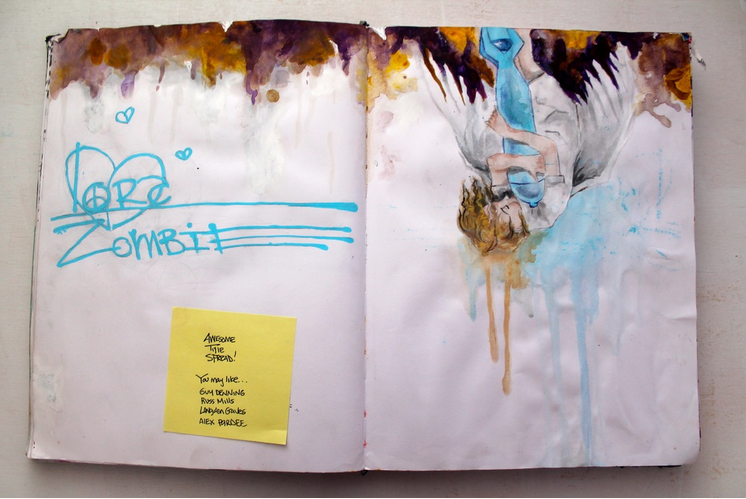Research and Response Directions PAGE ONE & TWO Decorative title spread for the artist you chose to study. Open your book flat and design both pages at once in either a vertical or horizontal format. This will save you time, and will unify your overall design. See the design tips that follow the page by page directions in the downloadable handout above this content. Be sure to include at least 6 high quality images of artworks that are indicative of the artist’s style. Be sure that you have researched the artist well and have chosen images that truly represent the trademark style of the artist. Don’t make the mistake of including works in your research that don’t actually belong to the artist. The six images can be spread across the four pages of your artist research in any manner that suits your design. It's important to label those images with the titles and dates to give context to the work. PAGE THREE & FOUR Give some basic information about the career of the artist. Do not concern yourself with detailed information about where the artist grew up and where they went to school, unless it is directly relative to the work of the artist. There is no one way to include your research and response across this two page spread, It's just expected that you are thorough and authentic in your writing. Be creative and authentic when displaying your research. Also, be sure that your handwriting is legible on the background you've chosen. If your typography is not legible, your design is not effective. | The Visual Journal Your Visual Journal is the the most important tool you'll ever use as an artist. I truly believe in the power of the journal as a space to harness your most important creative ideas, and we will use it every day in this class. As you already know, we have daily warm-up assignments that are to be completed in the journal. In addition to those warm-up activities, you will also be required to use it for creative research and idea development. The research has specific directions that will be discussed in class, but I have provided a link below the images to the left that you can download and keep for reference as you begin your research this week. WHAT IS THE VISUAL JOURNAL? Your Visual Journal will be a completely independent research and idea development journal. You will turn it in four times this year (once during each quarter). The grade for this quarterly project will weigh heavily toward your final grade, so please take it seriously. THE BOOK All work will be done in or pasted into an 8.5 X 11 inch sketchbook that you are required to purchase yourself. The research journal must be kept neatly for the entire year, so you will need to purchase a hardbound book. There are a number of black “Premier” brand sketchbooks available at A.C. Moore or Michael's in the west end for approximately seven dollars. WHAT GOES IN THE BOOK ? Artist Research and Response (1 artist per installment) Warm-Up Activities (Numbered and kept sequentially) Project Brainstorming All Class Notes Specific Drawing / Design Challenges Silent Critique Feedback (Printed and Pasted From Schoology) This journal will be a personal interaction between you and your work. I will also be involved in that interaction, as I guide you with questions and comments about the content of your journal. WHAT IS MEANT BY RESEARCH? Your research will consist of (but is not limited to) biographical and historical content, maps, examples of artwork, notes, personal responses, questions about your research, and sketches made from found information. MAKING PERSONAL CONNECTIONS This is NOT a formal research paper. It will have entries that are written in first person. It will be about your personal experiences as you search for information. You will include information about your struggles and triumphs with your artwork and research. This personal account is just as important as the information that you find out about your topic. WHERE TO FIND EXAMPLES Examples of quality research pages can be found in in the student online portfolios. Each portfolio is required to have a visual journal page on which the student displays their research as well as their thinking processes. These examples should be helpful for you and may guide you toward artists that interest you. HOW DO I KNOW WHAT TO STUDY? There is a permanent link on your class page titled “artists to research”. View that page or simply look through the researched artists by past students. Be sure to choose artists whose work can be researched. Obscure artists create a difficult challenge. Many students use social media to discover artists, which is acceptable. I only ask that you consult me before committing to researching these lesser known artists. BUDGET YOUR TIME. Don’t wait until the day before it’s due to get started, or you will find the project to be overwhelming. Many of you will do this, and will complain about the amount of work required to earn an “A”. My advice is simply this: don’t wait until the last minute to get started. | ||
|
0 Comments
Leave a Reply. |
Art 3
|





 RSS Feed
RSS Feed
